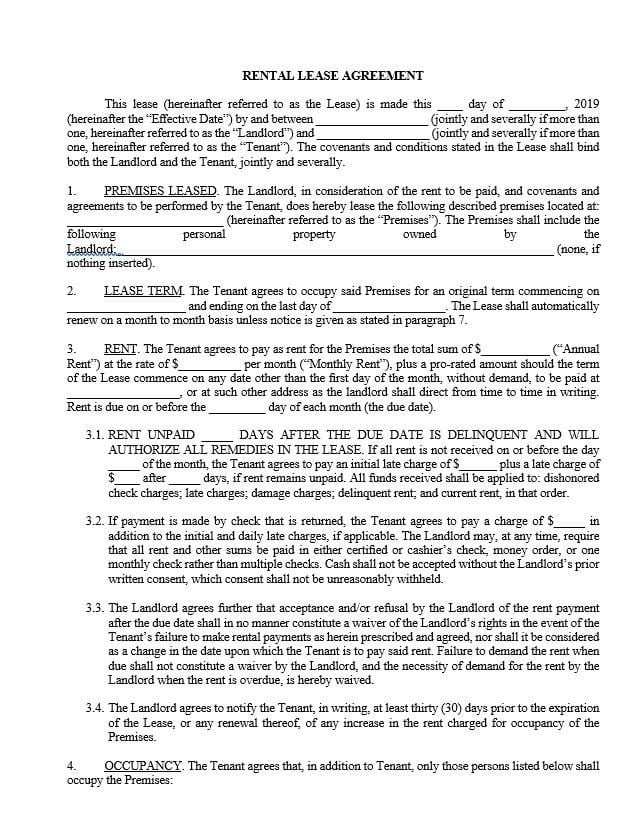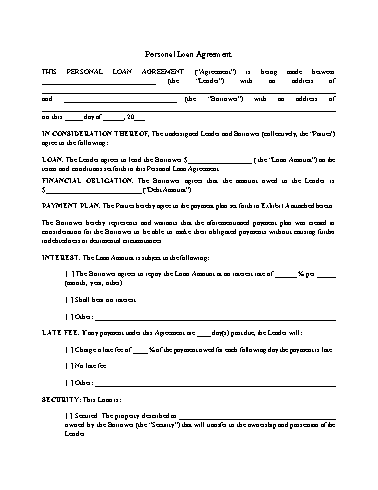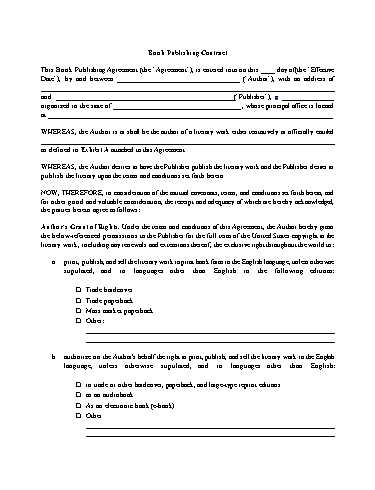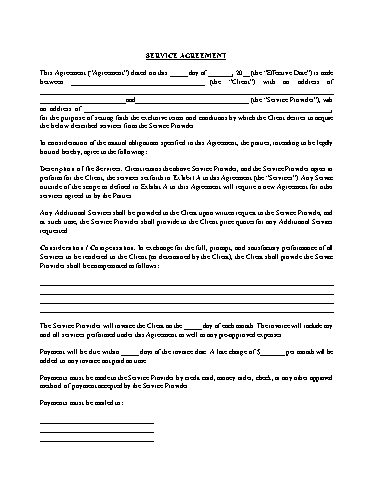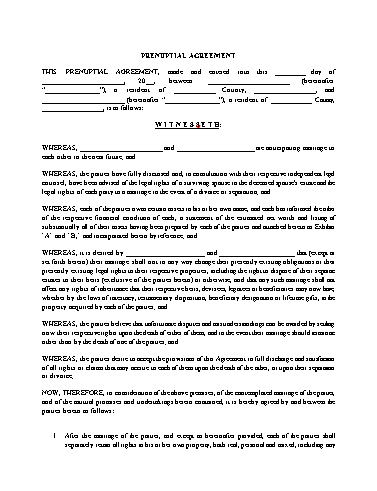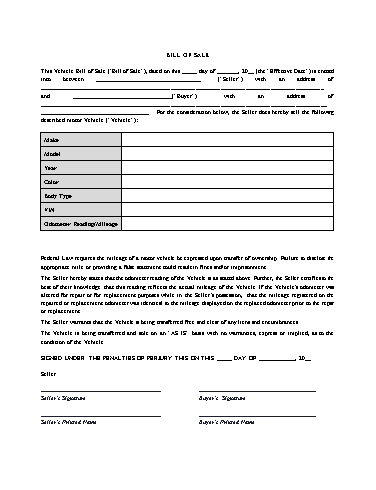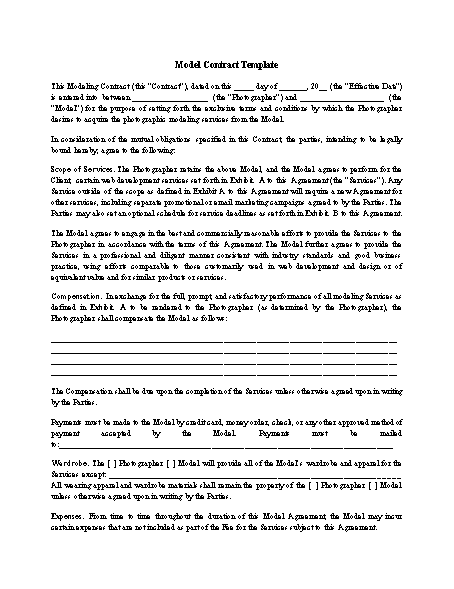Important Details | Landlord Considerations | Landlord Resources | Rental Agreement Template
Consider When Completing This Simple Rental Lease Agreement
- Term of Lease: The standard period of time for a Lease is 12 months. While it may seem attractive to have a longer lease executed, you do not know the type of tenant you may wind up with; he/ she could be a nightmare, creating havoc with other tenants, your property and owing large sums of rent and utilities. The 12 month term will provide you with the ability to remove an unwanted Tenant at the end of the Lease, retain them in a month to month capacity or even have them execute a new lease for another term.
- Rent Amount: The standard rent being charged will be determined by standard market factors. The first lease period should maintain a consistent rent unless there is an unexpected substantive change to the property. Increases in the rent should be made at the end of the initial rental term, upon execution of a renewal Lease or with visual improvements made to the building or each unit (i.e. new appliances, secured parking, free internet). If you wish to execute a multi-year lease, you should provide an addendum that increases the rent by a 2-5% increase each year after the initial lease term. You should also consider whether or not you will charge late fees for late payments or unpaid rent.
- Move-In & Move-Out:Many landlords will require first month’s rent and a security deposit paid in-advance of the actual move-in to secure tenancy. You should also make considerations about what you will do in the event your tenant(s) wish to move out early and terminate their lease – will you allow that, charge them a fee, or allow them to sublease the unit or rental property?
- Pets: An estimated 68% of the US are pet owners. Odds are that your prospective tenants will be as well. Does your building or unit allow pets? In some cases this is up to you, and in other scenarios, like condo associations, you may need to abide by the associations bylaws. If you allow pets, will you charge a pet deposit or monthly fee? We’ve attached a standard lease pet addendum for your potential use here as well.
- Additional Terms & Addendum: The standard form of Lease cannot account for all situations for every property, particularly as this is a simple lease agreement template. In addition to addenda examples listed in the body of this lease, each property has its own unique characteristics, amenities or appeal. Attaching an addendum to the Lease to address these situations is an important consideration. You can retain the standard form of lease and then address those unique issues such as use of a pool or clubhouse, the effect a local festival or annual event may have on tenants, policy addressing political signs or flags.
Important Considerations for Landlords
In addition to the above, Owners of residential and commercial property must be careful in preparing and signing leases with tenants. Beyond the financial considerations of the agreement, an owner must consider how to protect themselves before, during and after the term of the lease. Every owner, every tenant and every lease is unique and advice for particular circumstance really does require individual review and consideration. This article discusses some issues and considerations to keep in mind but is not an all-inclusive summary with respect to important issues facing a residential landlord. Legal disclaimers aside, an owner who wants to protect themselves from potential liability and attorney’s fees should consider the issues detailed below with respect to the following lease provisions that should be included in your lease, which commonly lead to substantial landlord mistakes: Property Use: The intended use of the property has undoubtedly been considered well in advance of the signing of the lease agreement, and even assumed, but it is essential that an owner include detailed limitations on the tenant’s rights to use the premises. Due to assumptions, prior conversations and failure to consider potential ramifications, an owner may overlook addressing the property use in the lease. While residential use specifications and limitations may be assumed, there are still significant considerations that must be made. A properly-drafted residential lease should consider the following use limitations and specifications:
- Specify Residential Use. A residential lease should indicate that the property is to be used solely for residential purposes and for no business, retail or other commercial uses.
- Limit the Number and Type of Occupants. An owner should consider what limitations should be placed on the number of occupants, the relationship between occupants and the permissibility of overnight and/or long-term guests.
- Require Certain Obligations of Tenant. A residential lease should obligate the tenant to maintain the property in good and clean condition and may limit the time which the property can be left vacant during the term of the tenancy.
Insurance Provisions: A property owner must be diligent in being sure that its property (and pocketbook) are protected upon the occurrence of events ranging from a fire or a slip-and-fall accident to a disgruntled tenant or negligent (or malicious) acts of a tenant or other party. An owner must consider requiring a residential tenant to obtain certain basic types of insurance policies or insure the property themselves and provide the suggestion to the tenant to obtain renters insurance. As owner it is advisable to maintain the responsibility of the insurance in order to control the coverage and ensure the policy is paid and consistently in place. If you want to pass the cost of the insurance on to the tenant, this can be addressed in the lease as an itemized cost in addition to the rent. This is a common practice in a “triple net” lease. Protections in the Event of Tenant’s Default: No matter how well-drafted a lease is or how well-situated a tenant might be, there will unfortunately be instances where a tenant defaults on its obligations under the lease. Whether due to cash flow shortfalls, misunderstandings regarding lease terms or simply a negligent (or malicious) tenant, every owner faces the very real risk of a tenant not living up to their contractual obligations. It should be noted that defaulting on a lease encompasses much more than late (or unpaid) rent—it also includes such events as misuse of the property, failure to obtain required insurance or violating other specific terms of the lease agreement. A residential lease should broadly define what constitutes default, including the following: (i) failure to make timely rent payments, (ii) failure to perform any covenants under the lease after a period of written notice from landlord, (iii) an event indicating tenant bankruptcy, and (iv) a lien or judgement against the premises or the tenant’s leasehold interest. A properly-drafted lease should also detail the rights that the owner has against the property and the tenant, including the following:
- Owner has right to declare the lease terminated and repossess the property.
- Owner has the right to recover all amounts due under the lease and those that will become due.
- Tenant shall be responsible for all costs (including attorneys fees) expended by owner in the termination of the lease and vacation of the property.
- Owner may re-enter the premises and lease them to a new tenant.
- Tenant shall be responsible for all costs associated with re-leasing the property.
Assignability: Any owner of property knows that the day will come when they will want to sell their property investment. With respect to the lease, the owner needs to be sure to protect its right to transfer (i.e. sell, give away, or transfer to a related business entity) the property title while not terminating the lease. The following provisions will prove necessary to protect the owner’s right to a transfer and his/her ability to do so. To these ends, the following provision in some form should be included in the lease: “In the event of any sale or exchange of the premises by landlord and assignment by landlord of this lease, landlord shall be and is hereby entirely freed and relieved of all liability under any and all of its covenants and obligations contained in or derived from this lease arising out of any act, occurrence or omission relating to the premises of this lease occurring after the consummation of such sale or exchange and assignment.”
Additional Landlord Resources
- State Landlord and Tenant Laws
- 7 Things to Know About Tenant Rights
- 10 Landlord Tenant Laws You Should Remember
Recommendations to Make Life as a Landlord Easier
- Use a Virtual Assistant for Property Management
- Set Calendar Reminders for Important Dates (smoke alarm installations, maintenance, renewal dates, etc.)
- Not Handy? Hire Helpers via TaskRabbit
- Looking for a Level Above for Repairs and Maintenance at Your Property? Try Angi
Up next is the actual text of the contract template. It’s fill-able on your computer once downloaded. Or, if you get an account with ApproveMe, you can edit online and get signed in seconds! While our document is in Word format, you can easily convert to PDF here.
Your Signing experience is worth celebrating!
ApproveMe is easy document signing for busy people. Built on the belief that every new agreement with a customer or client should be celebrated.
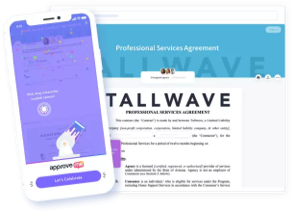
Rental Lease Agreement Template
RENTAL LEASE AGREEMENT This lease (hereinafter referred to as the Lease) is made this ____ day of _________, 2019 (hereinafter the “Effective Date”) by and between __________________ (jointly and severally if more than one, hereinafter referred to as the “Landlord”) and __________________ (jointly and severally if more than one, hereinafter referred to as the “Tenant”). The covenants and conditions stated in the Lease shall bind both the Landlord and the Tenant, jointly and severally. 1. PREMISES LEASED. The Landlord, in consideration of the rent to be paid, and covenants and agreements to be performed by the Tenant, does hereby lease the following described premises located at: _________________________ (hereinafter referred to as the “Premises”). The Premises shall include the following personal property owned by the Landlord:______________________________________________________________________ (none, if nothing inserted). 2. LEASE TERM. The Tenant agrees to occupy said Premises for an original term commencing on ___________________ and ending on the last day of __________________. The Lease shall automatically renew on a month to month basis unless notice is given as stated in paragraph 7. 3. RENT. The Tenant agrees to pay as rent for the Premises the total sum of $___________ (“Annual Rent”) at the rate of $__________ per month (“Monthly Rent”), plus a pro-rated amount should the term of the Lease commence on any date other than the first day of the month, without demand, to be paid at __________________, or at such other address as the landlord shall direct from time to time in writing. Rent is due on or before the _________ day of each month (the due date). 3.1. RENT UNPAID _____ DAYS AFTER THE DUE DATE IS DELINQUENT AND WILL AUTHORIZE ALL REMEDIES IN THE LEASE. If all rent is not received on or before the day _____ of the month, the Tenant agrees to pay an initial late charge of $______ plus a late charge of $____ after _____ days, if rent remains unpaid. All funds received shall be applied to: dishonored check charges; late charges; damage charges; delinquent rent; and current rent, in that order. 3.2. If payment is made by check that is returned, the Tenant agrees to pay a charge of $_____ in addition to the initial and daily late charges, if applicable. The Landlord may, at any time, require that all rent and other sums be paid in either certified or cashier’s check, money order, or one monthly check rather than multiple checks. Cash shall not be accepted without the Landlord’s prior written consent, which consent shall not be unreasonably withheld. 3.3. The Landlord agrees further that acceptance and/or refusal by the Landlord of the rent payment after the due date shall in no manner constitute a waiver of the Landlord’s rights in the event of the Tenant’s failure to make rental payments as herein prescribed and agreed, nor shall it be considered as a change in the date upon which the Tenant is to pay said rent. Failure to demand the rent when due shall not constitute a waiver by the Landlord, and the necessity of demand for the rent by the Landlord when the rent is overdue, is hereby waived. 3.4. The Landlord agrees to notify the Tenant, in writing, at least thirty (30) days prior to the expiration of the Lease, or any renewal thereof, of any increase in the rent charged for occupancy of the Premises. 4. OCCUPANCY. The Tenant agrees that, in addition to Tenant, only those persons listed below shall occupy the Premises: Name Date of Birth Name Date of Birth _____________________________ _____________________________ _____________________________ _____________________________ _____________________________ _____________________________ No person shall be released from the covenants of the Lease without first obtaining the written agreement of the other tenants and/or cosigners set forth herein and written approval of changes from the Landlord. If such changes are agreed upon, all parties herein agree to make the necessary changes to the Lease before changes are valid. The Tenant agrees that the Premises are to be occupied for residential purposes only. The Premises shall not be used or allowed to be used for any unlawful purpose, or for any purpose deemed hazardous by the Landlord because of fire or any other risk or in any other manner which would disturb the peaceful, quiet enjoyment of any other occupant of the apartment community of which the Premises are a part. The Landlord reserves the right of eviction for the illegal manufacture, distribution, use or other illegal activities in connection with controlled substances. A criminal conviction shall not be necessary before the Landlord can institute an eviction action. 5. SECURITY DEPOSIT. The Tenant agrees to deposit with the Landlord the sum of $__________ as security for Tenant’s faithful performance under the Lease and by law. The Tenant agrees the deposit is not an advance payment of rent and does not relieve the obligation to pay rent including rent for the last month of occupancy. The Landlord, at the expiration of the Lease or hold‐over tenancy, may apply the security deposit for past due rent, fees, utilities, and/or for the cost of repairing damages beyond reasonable wear and tear to the Premises caused by the Tenant, his/her guests, family or invitees. Also, abandonment or vacating of the Premises by the Tenant before the end of the term shall result in the Landlord deducting damages he has incurred from the security deposit. The Landlord shall attempt to mitigate any damages as a result of abandonment. Each of the aforementioned Tenants shall be jointly and severally responsible for all losses incurred by the Landlord occasioned by the tenancy. The Tenant agrees to provide the Landlord, in writing, a forwarding address upon vacating the Premises. The Landlord agrees to return to the Tenant the security deposit, or whatever part has not been applied in payment of any tenant obligations under the Lease, within thirty (30) days after the expiration or any renewal of the Lease and delivery of possession of the Premises to the Landlord, whichever is last to occur. Any deductions from the security deposit shall be itemized and identified in writing by the Landlord during this same time period. This provision does not waive rights of the Landlord to seek damages in excess of the security deposit. The Tenant agrees to reimburse the Landlord for any rent, fees, utilities due and/or damages exceeding the security deposit. 6. KEYS. The Tenant will be provided ________ apartment key(s), ______ mailbox key(s), and other key(s) for _____________. These keys may not be duplicated. There will be a $______ re‐keying charge for any of these keys not being returned upon vacating. 7. MOVE OUT NOTICE AND RENEWAL. Unless another Lease is signed by the parties hereto or unless written notice of termination is given by one party to the other at least thirty (30) days before expiration of the Lease, the Lease shall be automatically renewed on a month to month basis. At least thirty (30) days prior to the due date, written notice of intent to move out must be given to the Landlord or the Landlord’s agent. The Tenant’s move‐out notice must terminate the Lease ____ on the last day of the month following the next rental due date, or ____ on the exact day designated in the move‐out notice but no sooner than thirty (30) days prior to due date and after the notice. (If neither is initialed, the second option above shall control). Verbal notice is not sufficient. 8. UTILITIES. The Landlord shall pay for: ___ electricity, ____ gas, ____ water, ____ sewage and storm water, ____ trash disposal. The Tenant agrees to pay for all other utilities, related deposits and charges on the Tenant’s utility bills. The Tenant shall not allow any utilities paid for by Landlord to be disconnected by any means (including non‐payment of bill) until the end of the Lease term or renewal period. If the apartment is submetered, the Landlord shall attach an addendum to the Lease in compliance with any necessary public authority. The Tenant agrees to reimburse the Landlord for any utility bills paid by the Landlord during the Tenant’s responsibility to the Lease. Utilities shall be used only for normal household purposes and not wasted. 9. PETS. There shall be no dogs, cats, or pets of any kind permitted in, on, or about the Premises, or adjoining common areas (even temporarily), unless a written addendum with the Landlord consent is added to the Lease which provides otherwise. Such consent may be conditioned upon an increase the amount of rent due hereunder and/or an increase in the security deposit set forth in paragraph 5, above. If a pet has been in the apartment at any time during the tenant’s term of occupancy (with or without the Landlord’s consent), a charge may be made for defleaing, deodorizing, and/or shampooing, and/or other damages occasioned by the pet. 10. INSURANCE. Tenant will be responsible for insuring all the Tenant’s personal property within the Premises. Therefore, it is strongly recommended that the Tenant purchase a Renter’s Insurance policy, and the Tenant hereby relieves the Landlord of all risk that can be insured thereunder. 11. USE AND ASSIGNMENT/SUBLETTING. The Tenant agrees that the Premises shall be used only as a dwelling unit and for no other purpose; nor shall Premises or any part thereof be sublet or assigned, nor shall the number or name of occupants be increased or changed, without written consent of the Landlord. 12. TENANT’S DUTIES: The Tenant shall: 12.1. Keep the Premises that he/she occupies and uses safe and sanitary; 12.2. Dispose of all rubbish, garbage, and other waste in a clean, safe and sanitary manner approved by the landlord; 12.3. Keep all plumbing fixtures in the premises or used by the Tenant as clean as their condition permits; 12.4. Use and operate all electrical and plumbing fixtures properly; 12.5. Comply with the requirements on Tenants by all applicable state and local housing, health and safety codes; 12.6. Personally refrain, and forbid any other person who is on the Premises with his/her permission, from intentionally or negligently destroying, defacing, damaging, or removing any fixture, appliance or, other part of the Premises; 12.7. Maintain in good working order and condition any range, refrigerator, washer, dryer, dishwasher, or other appliances supplied by the landlord; Promptly notify the landlord of the need for repairs; 12.8. Conduct him/herself and require other persons on Premises with his consent to conduct themselves in a manner that will not disturb his neighbors’ “peaceful enjoyment” of the Premises; 12.9. Not unreasonably withhold consent for the Landlord or his/her agents to enter the Premises; 12.10. Conduct himself, and require persons in his household and persons on the Premises with his consent to conduct themselves, in connection with the Premises so as not to engage in criminal conduct, contain illegal or controlled substances or or violate municipal ordinances which relate to controlled substances; 12.11. Tenant shall regularly test all smoke detectors, supply electric current thereto (Battery or electric current if required by lease), and notify Landlord of any mechanical failure, need for repair, or replacement. 13. LANDLORD’S DUTIES: The Landlord shall: 13.1. Comply with the requirements of all applicable building, housing, health and safety codes that materially affect health and safety; 13.2. Make all repairs and do whatever is reasonably necessary to put and keep the Premises in a fit and habitable condition; 13.3. Keep all common areas of the Premises in a safe and sanitary condition; 13.4. Maintain in good and safe working order and condition all electrical, plumbing, sanitary, heating, ventilating and air‐conditioning fixtures and appliances, and elevators, supplied, or required to be supplied by the Landlord; 13.5. When he/she is a party to any rental agreements that cover four or more dwelling units in the same structure, provide and maintain appropriate receptacles for the removal of ashes, garbage, rubbish and other waste incidental to the occupancy of the dwelling unit and arrange for their removal; 13.6. Supply running water, reasonable amounts of hot water and reasonable amounts of heat at all times, except where the building that includes the Premises is not required by law to be equipped for that purpose, or the Premises is so constructed that the heat or the hot water is generated by an installation within the exclusive control of the tenant and supplied by a direct utility connection; 13.7. Except in the case of emergency, or if it is impractical to do so, give the Tenant at least twenty‐four (24) hours notice of his intent to enter and enter only at reasonable times; 13.8. Not abuse the right of access as described in this Lease; 13.9. Landlord shall furnish and repair smoke detectors as required by law. 14. CONDITIONS OF PREMISES and ALTERATIONS. The Tenant accepts the Premises AS IS, except for conditions materially affecting health or safety of ordinary persons, and except as otherwise indicated on the inventory and condition form described below, the Landlord makes no implied warranties. The Landlord shall provide an inventory and condition form to the Tenant on or before move‐in. Within seven (7) days after move‐in, the Tenant shall note all defects or damages on the form and return it to the Landlord’s agent; otherwise the Premises shall be presumed to be in clean, safe and good working condition. The Tenant shall use customary diligence in care of the apartment and common areas. Whenever damage is caused by the Tenants, the Tenant’s guests, or occupants due to carelessness, misuse, neglect, or failure to notify the Landlord of any need for repairs, the Tenant agrees to pay (1) the cost of all repairs and do so within thirty (30) days after receipt of the Landlord’s demand for the repair charges; and (2) rent for the period the unit is damaged whether or not the unit is habitable. The Tenant may not perform any repairs, painting, wallpapering, carpeting, electrical changes, or other alterations to the Landlord’s property except as authorized by the Landlord in writing. No holes or stickers are allowed inside or outside the apartment; however, a reasonable number of small nail holes for picture hanging are permitted. No water furniture, antennae, additional phone or TV cable outlets, alarm systems, or lock changes, additions, or rekeying shall be permitted except by the Landlord’s prior written consent. The Tenant shall not disable, disconnect, alter or remove the Landlord’s property, including security devices, alarm systems, smoke detectors, appliances, furniture, screens. When the Tenant moves in, the Landlord shall furnish light bulbs for fixtures furnished by the Landlord; thereafter, light bulbs of the same wattage shall be replaced at the Tenant’s expense. When moving out, the Tenant shall surrender the Premises in the same condition as when received, reasonable wear excepted. 15. WHEN THE LANDLORD MAY ENTER. The Landlord, or the Landlord’s representatives may peacefully enter the Premises during reasonable times for the purposes listed below, provided the Tenant or the Tenant’s guests are present. If no one is in the Premises, and request has been made for repair and/or entry by the Tenant, the Landlord, or the Landlord’s agents may enter peacefully and at reasonable times by duplicate or master key. If the Landlord requests entry, a written notice shall be given to the Tenant twenty‐four (24) hours prior to entry. The Landlord reserves the right to enter the Premises without notice in case of emergency. The Landlord reserves the right to enter by other means if locks have been changed in violation of the Lease. Such entry may be for: repairs, estimating repair or refurbishing costs; pest control preventive maintenance; filter changes; testing or replacing smoke detectors; retrieving unreturned tools or appliances; preventing waste of utilities; removing or rekeying unauthorized security devices or unauthorized alarm systems; removing health or safety hazards (including hazardous materials); inspections when imminent danger to person or property is reasonably suspected; entry by a law enforcement officer with search warrant or arrest warrant; showing apartment to prospective tenants (after vacating notice has been given); or insurance agents; or other valid business purposes. 16. NON‐LIABILITY. The Tenant acknowledges that any security measures provided by the Landlord shall not be treated by the Tenant as a guarantee against crime or a reduction in the risk of crime. The Landlord shall not be liable to the Tenant, the Tenant’s guests, or occupants for injury, damage, or loss to person or property caused by criminal conduct of other persons, including theft, burglary, assault, vandalism, or other crimes. The Landlord shall not be liable to the Tenant, guest or occupant for personal injury or damage or loss of personal property from fire, flood, water leaks, rain, hail, ice, snow, smoke, lightning, wind, explosions, and interruption of utilities unless caused by the Landlord’s negligence. The Landlord has no duty to remove ice, sleet, or snow; but the Landlord may do so in whole or in part, with or without notice. If the Landlord’s employees are requested to render services not contemplated in the Lease, the Tenant shall hold the Landlord harmless from all liability for same. 17. LEASE COMPLIANCE. The Landlord and the Tenant have, at all times, the right to require compliance with all covenants, terms and conditions of the Lease, notwithstanding any conduct or custom on the Landlord’s or the Tenant’s part in refraining from so doing at any time. Waiver at any time of any breach or condition of the Lease shall not constitute or become a waiver of any subsequent breach, or change any condition of the Lease. The Landlord, where not required by law, may discontinue any facilities, amenities, or such services rendered by the Landlord and furnished to several tenants on a common basis, not expressly covenanted for herein, it being understood that they constitute no part of the consideration for the Lease. 18. DEFAULT BY THE TENANT. In the event the Tenant is in default of any of the terms or obligations of the Lease, violates and/or fails to comply with any of the covenants, terms, or conditions of the Lease, or any community policies herein or hereafter adopted by the Landlord, said default shall constitute grounds for termination of the Lease and/or eviction by the Landlord. It is expressly understood and agreed that the Tenant shall be and remain liable for any deficiency in rent until the Lease expires or until such times as in the interim, the Premises are leased by another acceptable tenant. The Tenant shall also be and remain liable for any expense incidental to re‐letting, cleaning costs beyond normal wear and tear, trash removal, painting costs, utilities, or any other damages and costs which the Landlord has sustained by virtue of the Tenant’s use and occupancy of the Premises or default under the Lease. 19. DEFAULT BY THE LANDLORD. If the Landlord is in default of the obligations imposed by the Lease, the Tenant may terminate the Lease by following these procedures: (1) the Tenant shall make written request for repair or remedy of the condition within a reasonable time, and all rents must be current at such time; after receiving the request, the Landlord shall have the reasonable time to repair, or remedy, considering the nature of the problem and reasonable availability of materials, labor and utilities, (reasonable time is considered to be not more than thirty (30) days); if such time has passed and if the Landlord has not made a diligent effort to repair or has not reported on the progress of remedy, then the Tenant may deposit all rent that is due, on or before the due date, with the appropriate court having jurisdiction or (2) the Tenant may give written notice of intent to terminate the Lease unless the repair is made within thirty (30) days. 20. ASSIGNABILITY. In the event of any sale or exchange of the premises by Landlord and assignment by Landlord of this lease, Landlord shall be and is hereby entirely freed and relieved of all liability under any and all of its covenants and obligations contained in or derived from this lease arising out of any act, occurrence or omission relating to the premises of this lease occurring after the consummation of such sale or exchange and assignment 21. ENTIRE AGREEMENT. The Lease and attached Addenda listed in Paragraph 23 are the entire agreement between the Landlord and the Tenant. No representations oral or written, not contained herein or attached hereto, shall bind either party, except any attached Addendum. The Landlord or the Landlord’s agents (including management personal and other employees or agents) do not have authority to waive, amend or terminate the Lease or any part of it and do not have authority to make promises, representations or agreements which impose duties of security or other obligation on the Landlord or the Landlord’s agents unless done in writing. No action or omission of the Landlord’s representative shall be deemed a waiver of any subsequent violation, default, or time or place of performance. 22. SEVERABILITY. If any portion of the Lease is found to be void, unenforceable, or against public policy, the remaining portions of the Lease shall not be affected. 23. BINDING EFFECT. The Lease is binding on the Landlord and the Tenant and on their respective heirs, successors, executors, and administrators. The Consumer Sales Practices Act does not apply to the Lease. 24. NOTICES. Any notice, request, instruction, or other document to be given hereunder by either party hereto to the other party shall be in writing and delivered personally or sent by any form of prepaid mail which confirms receipt, as follows: To Tenant at the Premises, or, following termination of this Lease, to address provided by Tenant by notice in conformance herewith; To Landlord at the address for payment of rent, as the same may be changed by landlord by notice in conformance herewith. 25. ADDENDA. By initialing below, Landlord and Tenant acknowledge that the following addenda and other provisions attached are a part of the Lease. Landlord Tenant Inventory and Condition _____ Form Pet Addendum _____ Community Policies _____ Other _____ 26. ADDITIONAL TERMS AND CONDITIONS. _______________________________ ________________________________________________________________________ ________________________________________________________________________ ________________________________________________________________________ EXECUTED BY Landlord And Tenant in duplicate on the day and year first written above. _____________________ _____________________ LANDLORD TENANT Rental Inspection Checklist Complete this inventory checklist as soon as you sign the lease. Do not move anything into your apartment till after you have filled this out. Take pictures of any damages, dents, marks, etc. Please sign and return to the Landlord within 24 hours of occupancy. You should keep the original copy for your records. Living Room Quantity/Specific Location Condition on Arrival Condition on Departure Walls and Ceiling Floor Covering Windows (curtains, blinds, etc…) Doors Light Fixtures Lamp (s) Furniture (if applicable) Baseboards/Moldings Other Comments: Kitchen Quantity/Specific Location Condition on Arrival Condition on Departure Stove, Oven, Range, Hood, Broiler, Pans, Burners, etc… Floor Covering Windows (curtains, blinds, etc…) Doors Light Fixtures Cabinets/Drawers Counter Surfaces Sink, Gargage Disposal, Faucet Microwave Oven Refrigerator Furniture Dishwasher Other Comments: Bathroom Quantity/Specific Location Condition on Arrival Condition on Departure Walls and Ceiling Floor Covering Windows (curtains, blinds, etc…) Doors Light Fixtures Cabinets/Drawers Counter Surfaces Sink and Faucet Toilet/Tissue Holder Shower and Tub Towel Racks Mirror/Medicine Cabinet Water (hot and pressure) Comments: Bedroom Quantity/Specific Location Condition on Arrival Condition on Departure Walls and Ceiling Floor Covering Windows (curtains, blinds, etc…) Doors Light Fixtures Closets (Doors and tracks) Book Shelves Molding and Baseboards Furniture (if applicable) Other Comments: Other Areas: Specify Quantity/Specific Location Condition on Arrival Condition on Departure Exterior Walls and Roof Driveway Doorbell/Knocker Mailbox (check lock) Yard, Patio, Deck External Doors and Locks Outside Lights Other Comments: Move – In Inventory Date Move-Out Inventory Date Tenant’s Signature Tenant’s Signature Landlord’s Signature Landlord’s Signature PET ADDENDUM TO RENTAL LEASE AGREEMENT This Pet Addendum (“Addendum”) is attached to the lease dated ________, 2019 (“Lease”), by and between Landlord and Tenant for the Premises. Tenant has requested and Landlord has agreed to allow a pet to reside with Tenant at the Premises. The Tenant has read, understands, and agrees to abide by all applicable house policies pertaining to pets as outlined in this Addendum. Tenant has requested to keep at pet according to the Lease and has been granted permission by the Landlord under the following terms and conditions: 1. The Tenant shall pay an additional security deposit of $_______ to be payable upon execution of this Addendum. 2. The Annual Rent for Tenant shall increase by $______ to be paid in monthly installments of _____ per month in addition to the Monthly Rent. 3. That the pet will be allowed out of the pet owner’s unit or yard only under the complete control of a responsible human companion and on a hand-held leash or in a pet carrier. 4. That any damage to the exterior or interior of the premises, grounds, flooring, walls, trim, finish, tiles, carpeting, or any stains, etc., caused by the pet will be the full financial responsibility of the Tenant and that Tenant agrees to pay all costs involved in the restoration to its original condition. If because of any such stains, etc., said damage is such that it cannot be removed, then Tenant hereby agrees to pay the full expense of replacement. 5. That the Tenant will provide adequate and regular veterinary care, as well as ample food and water, and will not leave pet unattended for any undue length of time. Tenant will diligently maintain cleanliness of litter boxes as well as pet sleeping and feeding areas. Tenant will prevent pets from engaging in behaviors or creating excessive noise at a level that disturbs neighbors, including, but not limited to, barking, jumping, and running. 6. That, if there is reasonable cause to believe an emergency situation exists with respect to the pet, and if efforts to contact the Tenant and emergency caretaker are unsuccessful, the Landlord or the Landlord’s agents may contact the local animal control authority and assist its staff in entering the Tenant’s apartment. Examples of an emergency situation include suspected abuse, abandonment, fire or other disaster, or any prolonged disturbance. If it becomes necessary for the pet to be boarded, any and all costs incurred will be the sole responsibility of the Tenant. 7. That the Tenant agrees to indemnify, hold harmless, and defend Landlord or Landlord’s agents against all liability, judgments, expenses (including attorney’s fees), or claims by third parties for any injury to any person or damage to property of any kind whatsoever caused by the Tenant’s pet(s). 8. That if a dispute arises out of this contract that cannot be settled through negotiation, the Landlord and Tenant agree first to try in good faith to settle the dispute by mediation administered either by a local mediator or by the American Arbitration Association under its commercial mediation rules. If the parties cannot agree on which agency shall administer the mediation, the Landlord’s choice shall govern. EXECUTED BY Landlord And Tenant in duplicate on the day and year first written above. _____________________ _____________________ LANDLORD TENANT
Frequently Asked Questions
How to write a basic rental agreement
The following are some points to remember when writing a rental agreement:
- Be sure to include all relevant information, such as duration, deposit, utilities, etc.
- Include your contact information for both parties, such as email address and phone number
- Specify what happens if either party does not follow the terms of the agreement
- Be sure to mention any deposits that need to be paid at the time of signing
How do I write a basic rental agreement
How to fill out basic rental agreement
In order to fill out this form correctly, you need to know your rights as a tenant and your responsibilities as well. You also need to know what you can expect if you decide not to sign on for your next lease. You should review this information before you fill out a rental agreement to make sure you are confident in your decision.
How to fill out a basic rental lease agreement
The following steps will guide you through how to complete a basic rental lease agreement:
- Identify what type of property you're renting.
- Determine how long your contract will last.
- Declare what your monthly rent payment is going towards.
- Identify who should be responsible for utilities and repairs in your agreement
Can I make rent agreement myself?
Once you have talked through these things, it is time to make your agreement. It is smart to start with a template, like the one available here, which has lots of information you can use or edit for your needs.
What is a standard rental agreement?
How can I make a rent agreement online for free?
How do I write a simple basic rental agreement?
Can you create your own rental agreement?
What is a basic rental agreement form?
- The terms of the agreement
- The property location, size, and amenities
- The rent amount and payment schedule
- Potential damages that may occur during tenancy
Who needs a basic rental agreement?
What must a basic rental agreement form have?
Do basic rental agreement’s have to be in writing?
What should I put in my basic rental lease agreement?
The following are some of the key clauses in a basic rental lease agreement:
- The duration of tenancy
- The amount of rent paid
- What utilities are included in the rent
- What other fees will be charged to tenant
How to make a basic rental agreement
- The names of both parties involved in this agreement
- The address of where this property is located
- A description of what type of property is being rented out
- The rent and duration of the rental agreement
How long are basic rental agreement good for?
What are some basic rental agreement examples?
What needs to be in an free printable basic rental agreement word?
Can I use this free printable basic rental agreement word document for a standard rental agreement?
Can I convert this contract template into a free printable basic rental agreement pdf?
Should I use a basic rental agreement or residential lease for my rental property?
Where can I find a free basic rental agreement or residential lease word doc?
Why did ApproveMe.com create this residential lease free printable basic rental agreement?
Send Contracts in Minutes
Unlock the power of WP E-Signature on your website using your branding today!
Get Started Now

